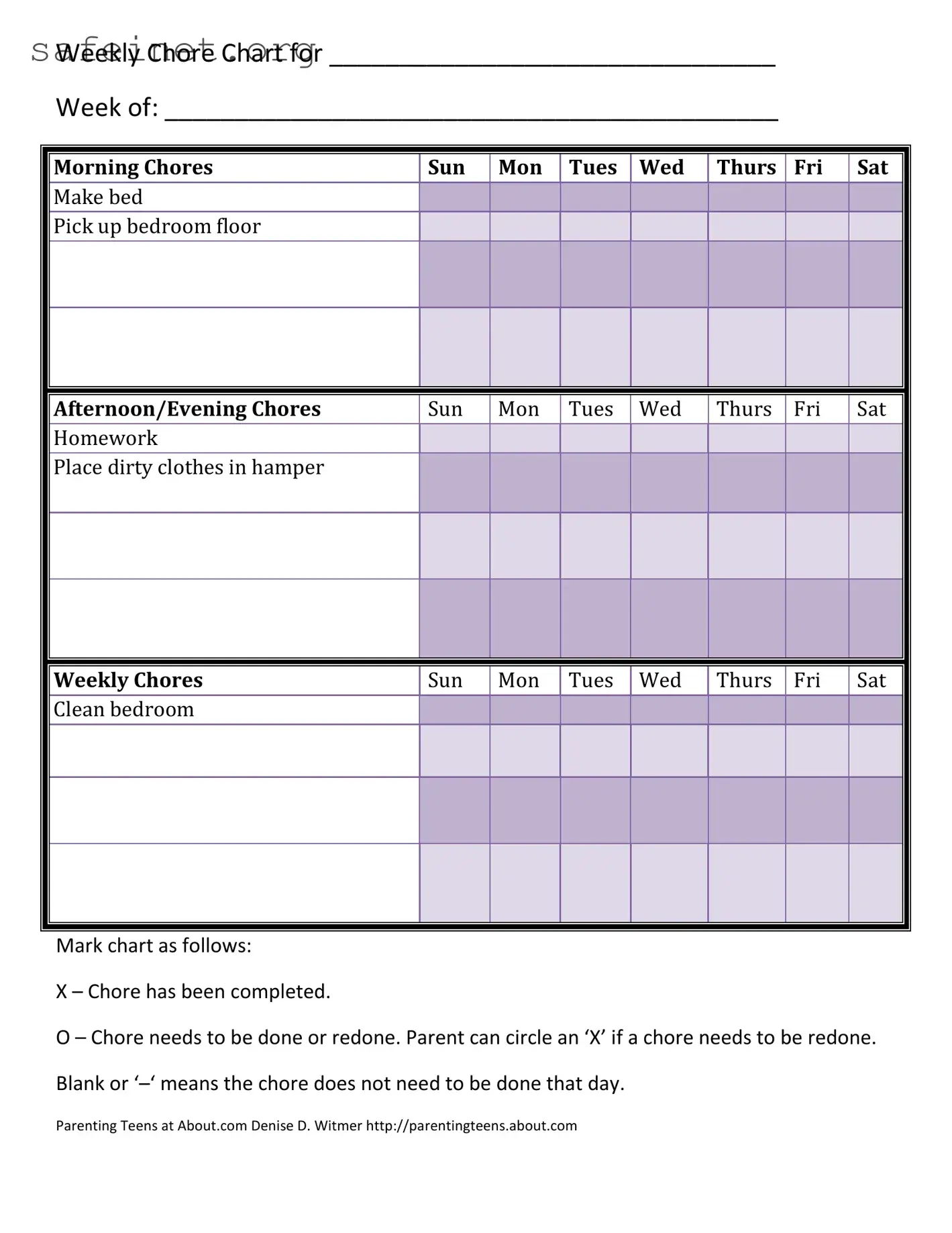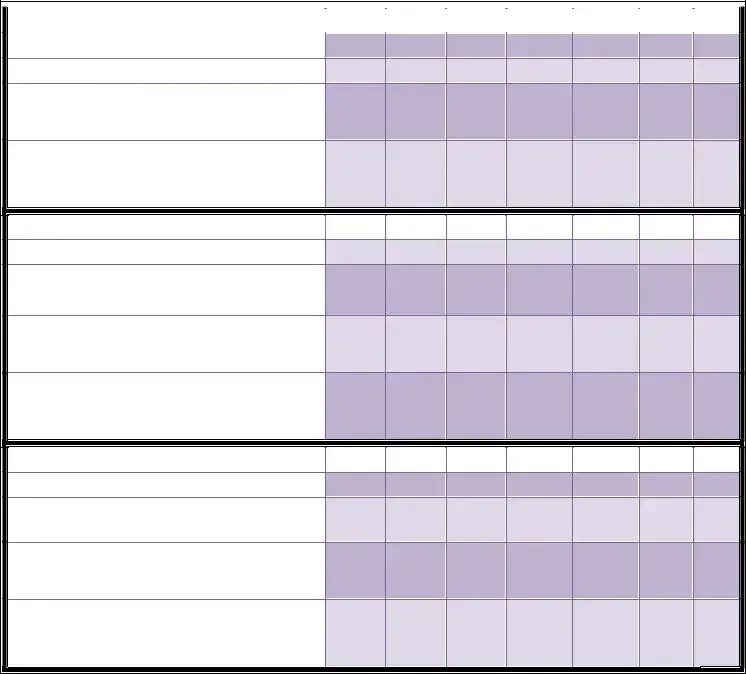The first document similar to the Chore Chart Morning Evening form is a Family Calendar. A Family Calendar is used to organize daily activities and responsibilities, much like the Chore Chart. Both documents help families keep track of tasks, ensuring everyone knows what needs to be done each day. Parents often find that having a visual representation of chores and important events simplifies planning and promotes accountability among family members.
Next, the Daily Task List serves a similar purpose. This list outlines specific tasks to be completed each day, much like the morning and evening chores in the Chore Chart. A Daily Task List can be individual or family-oriented, providing structure and clarity for daily responsibilities. By checking off completed tasks, users can enjoy a sense of accomplishment, making it easier to stay focused and organized.
The Weekly Planner is another comparable document. This planner divides the week into sections, outlining activities and chores scheduled for each day. It functions similarly to the Chore Chart because it encourages time management and accountability among family members. Families can coordinate their schedules, ensuring that household tasks are fairly distributed and completed efficiently.
Chore Calendars are also quite alike in purpose. These calendars outline specific chores assigned for each day or week and typically involve tracking completion, akin to marking with ‘X’ or ‘O’ in the Chore Chart. Chore Calendars promote teamwork and responsibility, making it clear who is responsible for what, which helps maintain a harmonious home environment.
The Cleaning Schedule has a distinct function but serves a similar need. This document lays out a comprehensive plan for maintaining cleanliness in the household. Like the Chore Chart, it breaks tasks into manageable segments, helping families maintain order and cleanliness. Users can visualize their responsibilities, keeping spaces organized and preventing overwhelming feelings when tackling chores.
Homework Assignments List aligns closely with the educational aspect mentioned in the Chore Chart. This list lays out specific homework tasks for students throughout the week. By checking off completed assignments, students can manage their schoolwork effectively, much like marking completed chores. This keeps them on track academically while also promoting responsibility for their learning.
Another related document is the Meal Planning Sheet. This sheet outlines the meals for each day of the week, contributing to household organization. Like the Chore Chart, it encourages families to work together, plan ahead, and tackle tasks efficiently. Meal planning reduces stress during busy evenings and affirms teamwork in the household.
Family Responsibilities Agreement also resembles the Chore Chart. This agreement outlines specific roles and tasks assigned to each family member, much like the chores for different days. It promotes clear communication about responsibilities, helping to avoid conflicts and misunderstandings regarding household tasks and expectations.
Finally, a Behavior Chart is conceptually similar as well. This chart tracks positive behaviors and chores completed, often employing a reward system to encourage responsibility. Like the Chore Chart, it provides structure and promotes accountability, ensuring that family members understand their role in maintaining a positive home environment.

